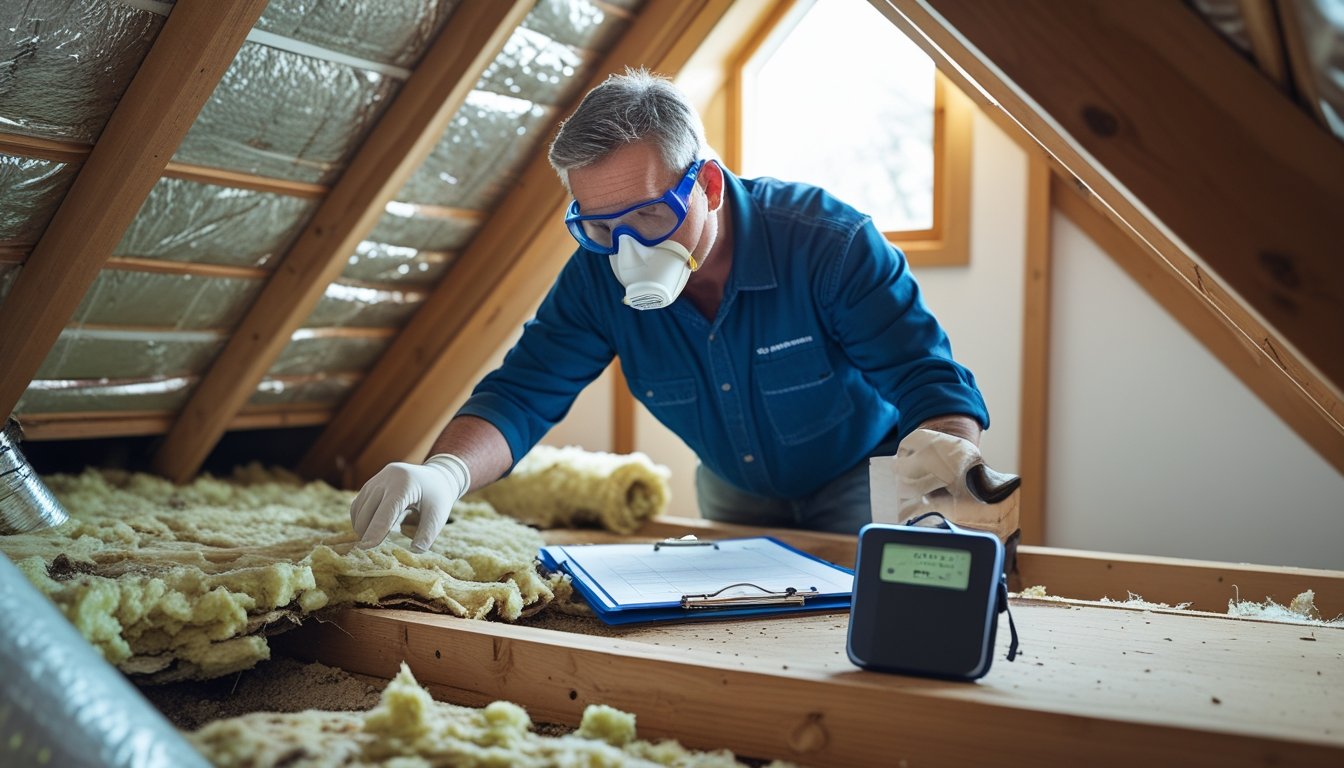Late updated: 03 Jul 2025 08:07
Written by: Daniel Harper
Effective Asbestos Management for Homeowners: Essential Safety Tips and Practices
Effective asbestos management is crucial for homeowners to ensure a safe living environment. Asbestos, a once-common building material, poses significant health risks when its fibres become airborne. Managing these risks begins with identifying potential asbestos-containing materials and addressing them appropriately. This not only prevents dangerous exposure but also helps homeowners comply with safety regulations.

We will explore practical strategies for managing asbestos effectively within residential properties. As homeowners, it is important to understand the role of professional guidance in handling this hazardous material and the benefits of encapsulation or complete removal. Additionally, knowing when to seek expert help is vital in maintaining the health and safety of those living in the home.
In our comprehensive guide, we also address common questions homeowners may have about asbestos, including the legal requirements for its management and the steps necessary to mitigate associated risks. By remaining informed and proactive, we can safeguard our homes and families from the dangers of asbestos.
Key Takeaways
- Identifying asbestos in homes is essential for safety.
- Hiring professionals for asbestos management is crucial.
- Understanding legal requirements helps ensure compliance.
Understanding Asbestos Hazards in Residential Properties
Asbestos remains a significant concern in residential environments due to its widespread use in construction materials and the serious health risks it can pose if disturbed. We must understand how to identify asbestos-containing materials and be informed of the associated health hazards and legal responsibilities
Identifying Asbestos-Containing Materials
In many homes, asbestos can be found in building materials such as insulation, roofing, and flooring. These asbestos-containing materials (ACMs) were favoured for their durability and heat-resistant properties. Common signs of asbestos presence include textured coatings, pipe insulation, and old vinyl tiles. It is important for homeowners to know these signs before undertaking any renovation work.
Testing is crucial to confirm the presence of asbestos. Professional asbestos inspectors use specialised methods to test samples. If confirmed, it's essential to manage it safely. Only qualified professionals should handle the removal or disturbance of ACMs to prevent airborne asbestos fibres, which can be harmful when inhaled.
Health Risks of Asbestos Exposure
Asbestos exposure poses severe health risks as inhalation of the fibres can lead to several diseases. Common asbestos-related illnesses include asbestosis, lung cancer, and mesothelioma. These conditions are often incurable and can dramatically reduce quality of life.
Symptoms of asbestos exposure might not appear until decades after first contact, making it even more dangerous. The risk of disease increases with the intensity and duration of exposure. Therefore, understanding and mitigating exposure risks is vital for protecting our health and that of our families. Limiting exposure is key, so proper management and handling of any asbestos in our homes are essential steps.
Legal Responsibilities and Regulations
Homeowners must be aware of their legal responsibilities regarding asbestos management. Regulations from the Environmental Protection Agency (EPA) and the Occupational Safety and Health Administration (OSHA) dictate safe handling and reporting of asbestos materials. Compliance with these laws is mandatory to protect both residents and workers.
State-specific regulations may impose additional requirements. Failure to comply with these regulations not only endangers health but can lead to significant legal penalties. Developing an asbestos management plan ensures proper handling and documentation of any asbestos-related activities within the property. Understanding these legal obligations helps us maintain safe living environments while avoiding legal liability.
Effective Asbestos Management Strategies for Homeowners

Homeowners facing asbestos challenges need effective strategies to manage it safely. Understanding the process of inspection, risk assessment, and abatement methods involves crucial steps that ensure health and safety. Below, we explore key aspects that are essential in effective asbestos management.
Initial Inspection and Asbestos Testing
To determine the presence of asbestos, an initial inspection is fundamental. Homeowners can choose DIY asbestos testing kits for simplicity, though engaging certified professionals offers more precise results. These experts carry out a comprehensive asbestos survey, helping us establish a thorough asbestos register. Evaluating materials such as insulation, tiles, and roofing compounds is crucial to pinpoint potential hazards that must be tackled.
Risk Assessment and Ongoing Monitoring
Once asbestos is identified, risk assessment must be conducted. This involves analysing the condition and distribution of asbestos-containing materials (ACMs). Equally important is ongoing monitoring as building conditions can change over time. Implementing an asbestos management plan that includes regular air monitoring helps maintain a safe environment and offers peace of mind about asbestos exposure.
Asbestos Abatement Methods: Removal, Encapsulation, and Enclosure
There are several tactics for asbestos abatement. Removal is often considered the most thorough but requires licensed professionals to handle safely. Encapsulation, using specialised encapsulants, seals ACMs, preventing fibre release. Enclosure involves constructing barriers to isolate asbestos materials. Each method has its merits and should be selected based on the material condition and exposure risk.
Safe Handling and Disposal of Asbestos
Proper handling and disposal of asbestos are critical components of safety. We must adhere to strict asbestos handling regulations that include wearing protective gear like respirators and eye protection. Collaboration with a professional asbestos abatement company helps ensure safe removal procedures. Following defined training requirements, these experts also manage the secure disposal of asbestos, maintaining compliance with health standards.
Frequently Asked Questions

Our aim is to address common concerns surrounding asbestos in residential properties. We'll provide insights on where asbestos is usually located, what immediate actions are necessary if exposure is suspected, and the proper procedures for safely removing it.
What are the most common locations of asbestos found in residential properties?
In many homes, asbestos can frequently be found in insulation around pipes, roofing materials, and floor tiles. It is also often present in sprayed coatings on ceilings and walls. Knowing these locations is crucial for identifying potential risks.
What steps should be followed if one suspects exposure to asbestos at home?
If we suspect exposure, it's important to avoid disturbing the material any further. We should seek professional assessment and testing services immediately. Attempting to manage the situation on our own could lead to unintentional contamination.
What guidelines must be adhered to when carrying out asbestos removal works?
Removal should always be conducted by licensed professionals who follow strict regulatory guidelines. These include proper containment, use of protective gear, and disposal in designated facilities. Adhering to these standards ensures the safety of everyone involved.
Are homeowners eligible for grants for the removal of asbestos, and how can they be accessed?
Grants for asbestos removal are sometimes available through governmental or local authority programmes. Homeowners should check with local councils or environmental agencies for eligibility criteria and application procedures.
During what period was asbestos widely utilised in Canadian home construction, and why is this significant?
Asbestos was commonly used in Canadian homes between the 1920s and late 1980s. This is significant because homes built during this period are more likely to contain asbestos-containing materials. Awareness of the construction era helps us assess potential risk levels.
What immediate actions should one take upon inadvertently disturbing materials containing asbestos?
Firstly, we should evacuate the area to prevent inhalation of fibres. Next, contact a qualified asbestos professional to assess the situation and handle any clean-up. It’s critical to avoid any further disturbance to minimise health risks.
